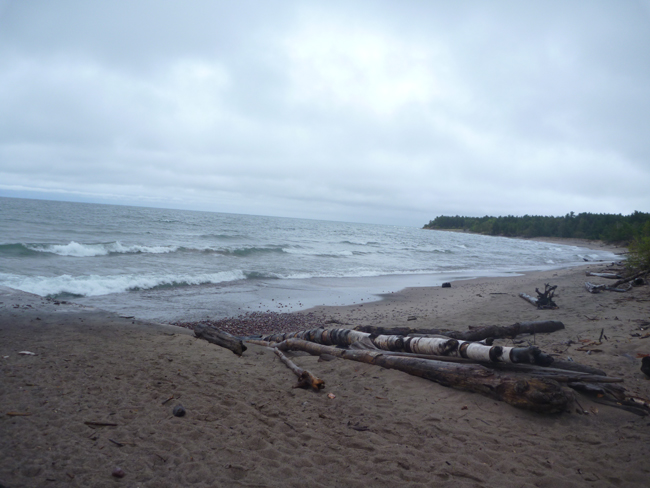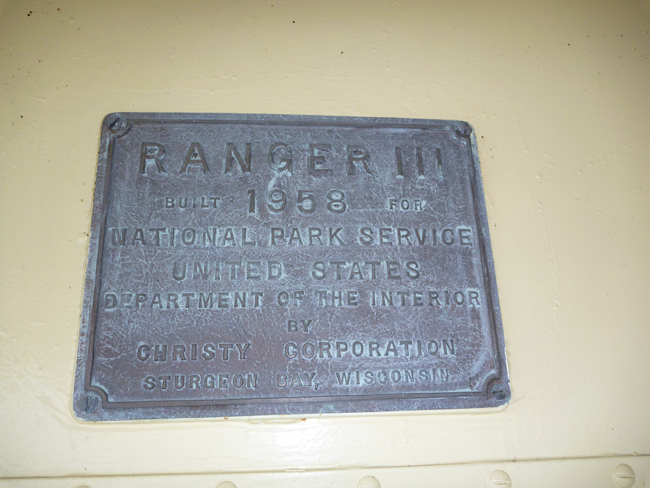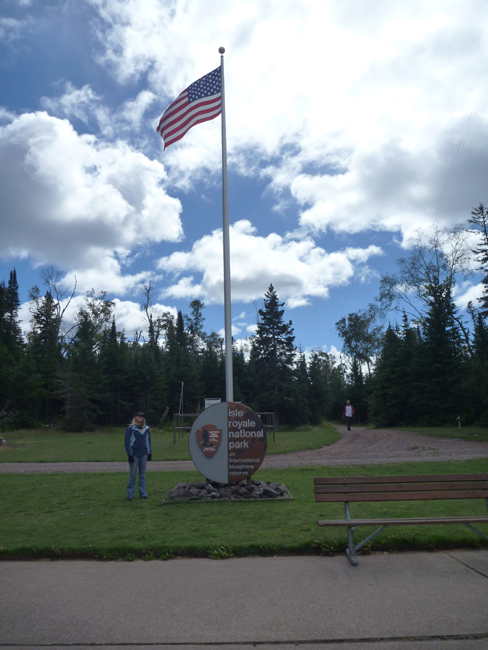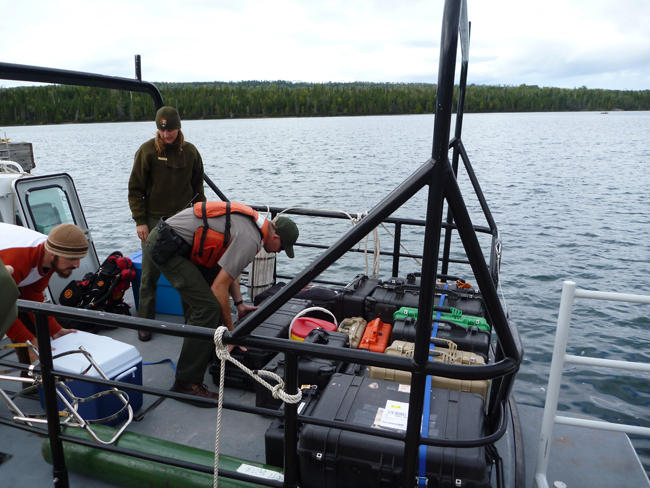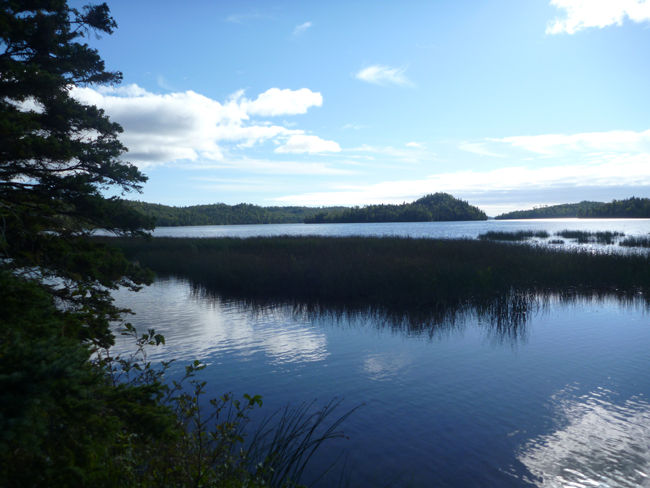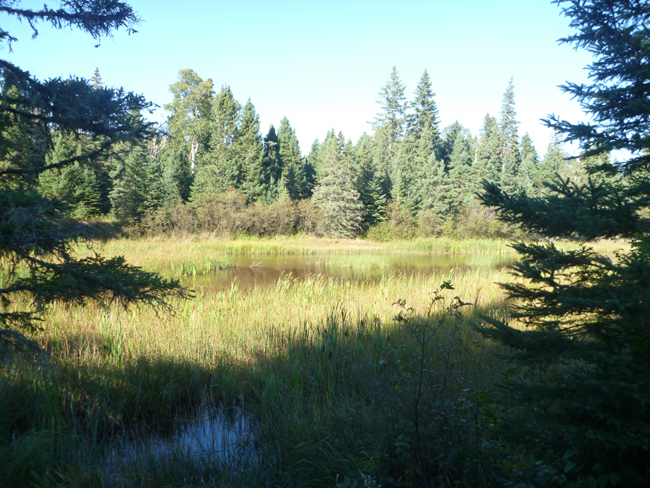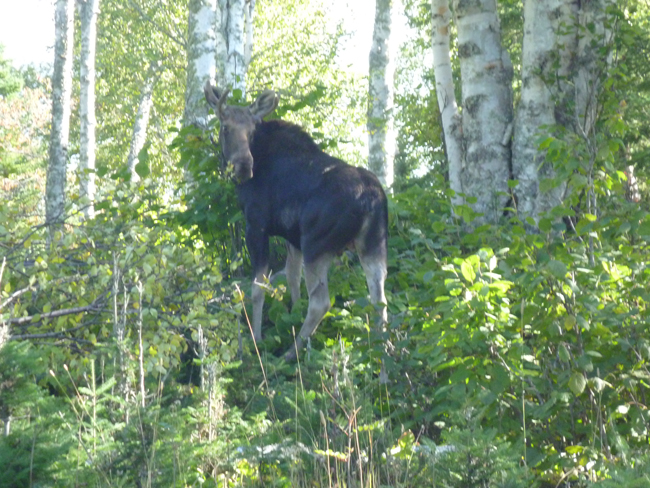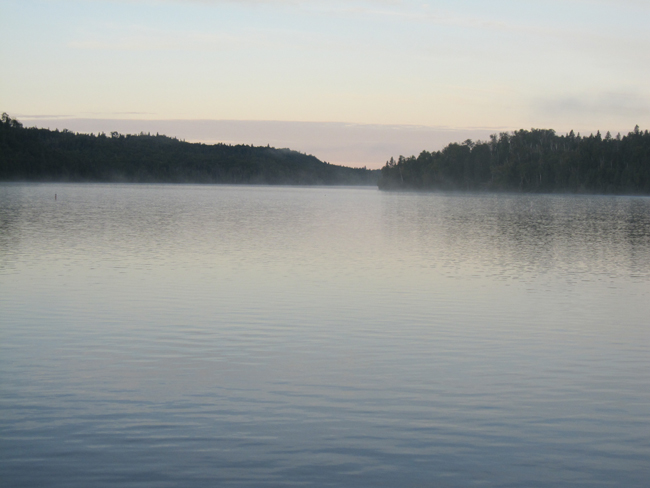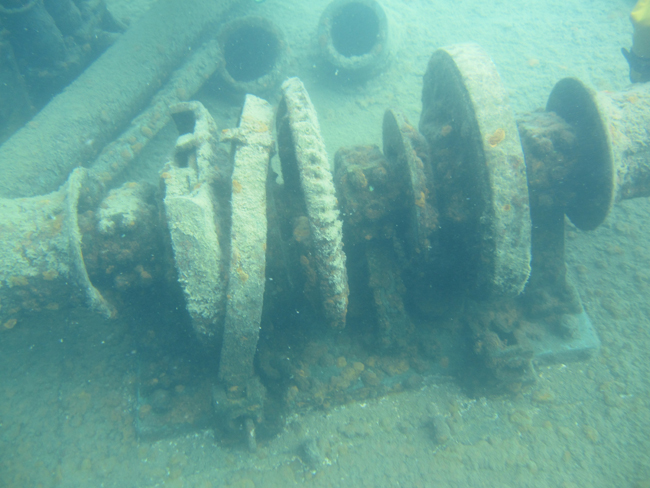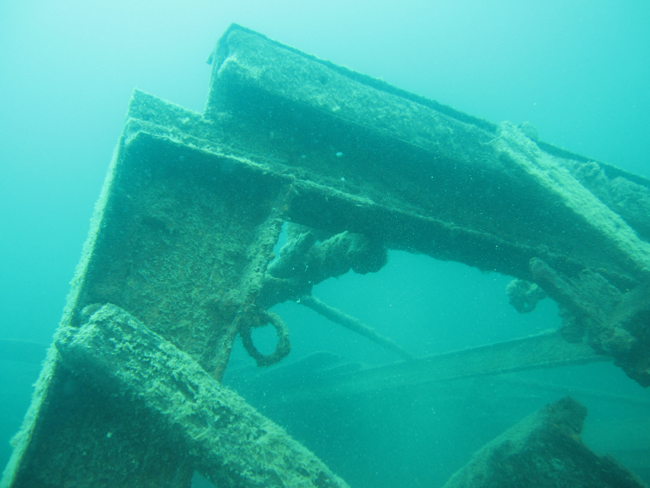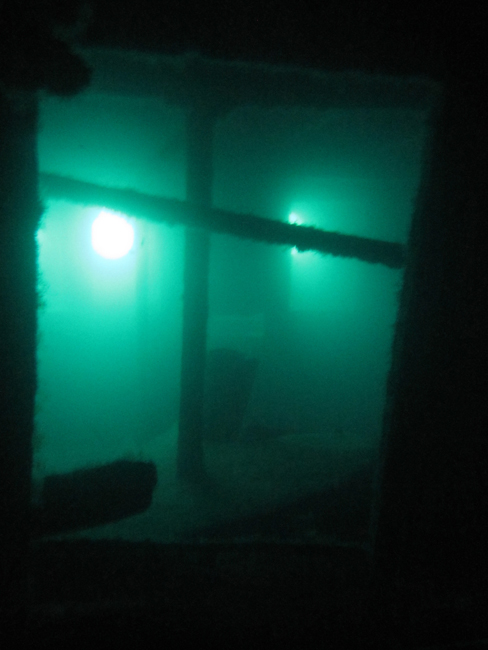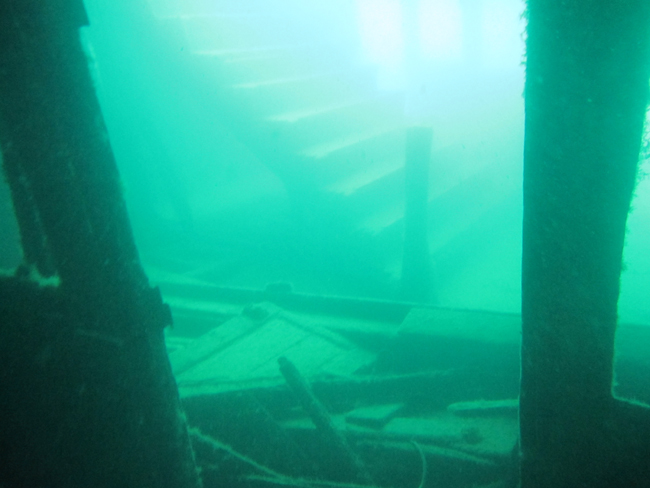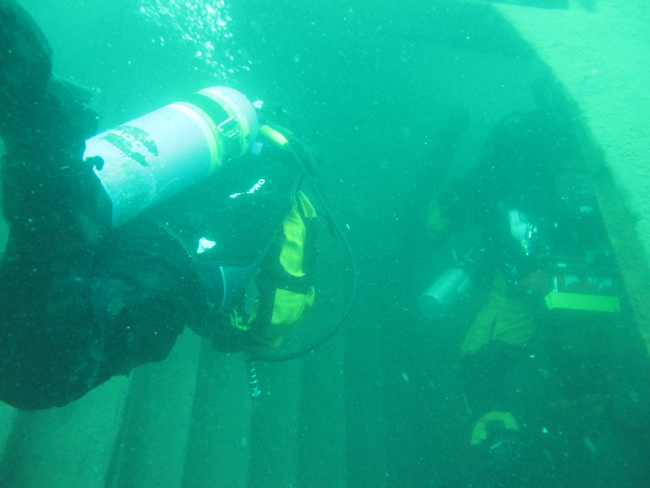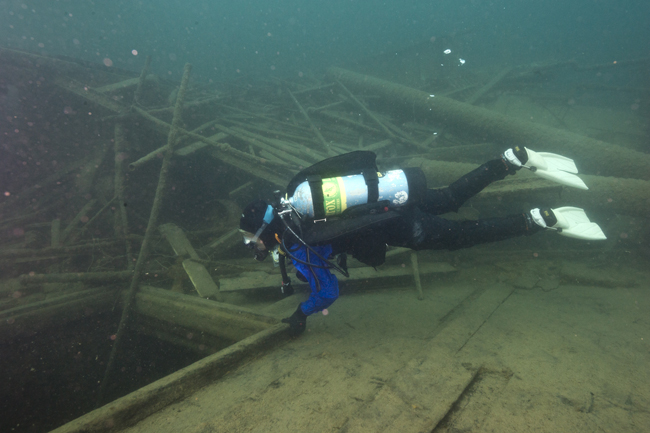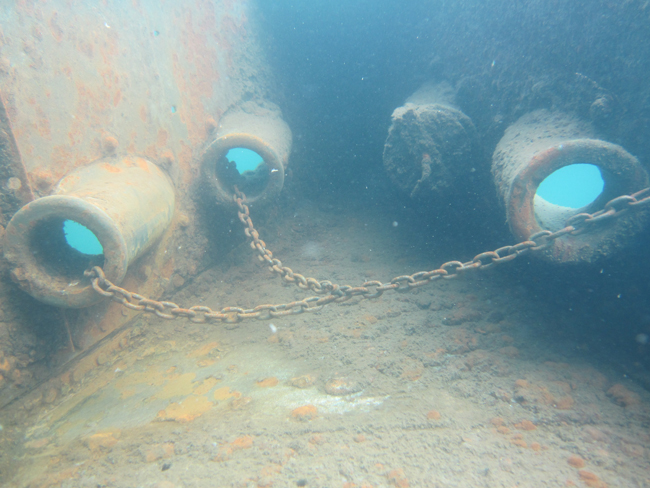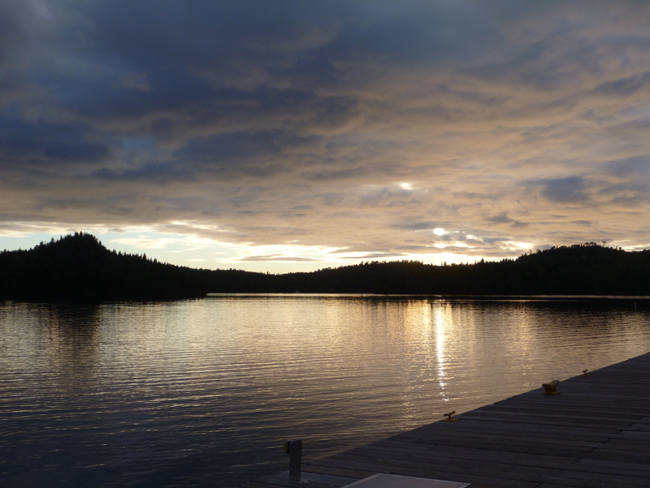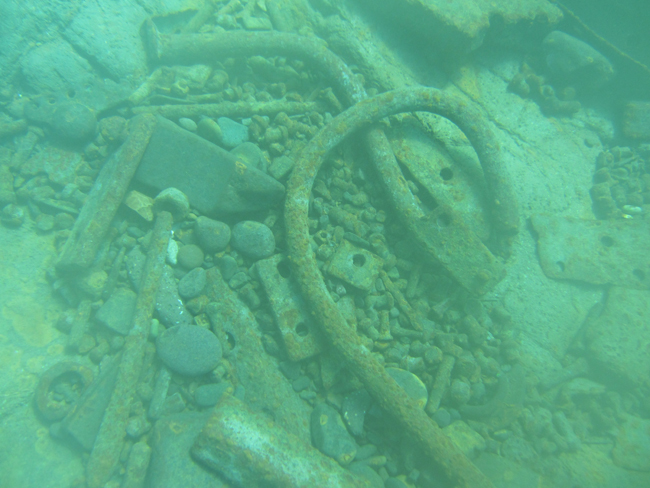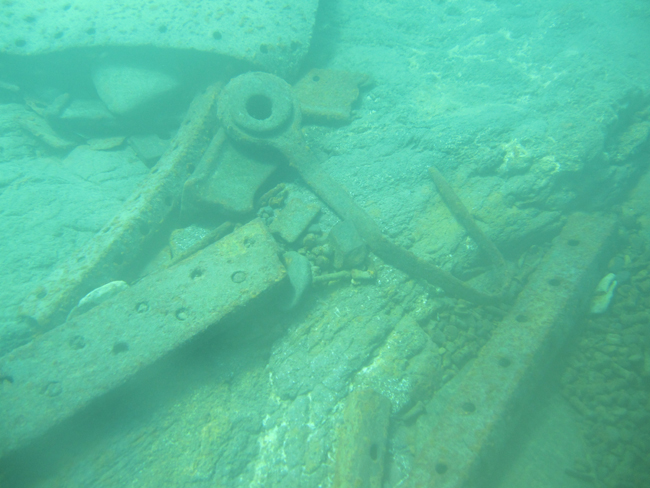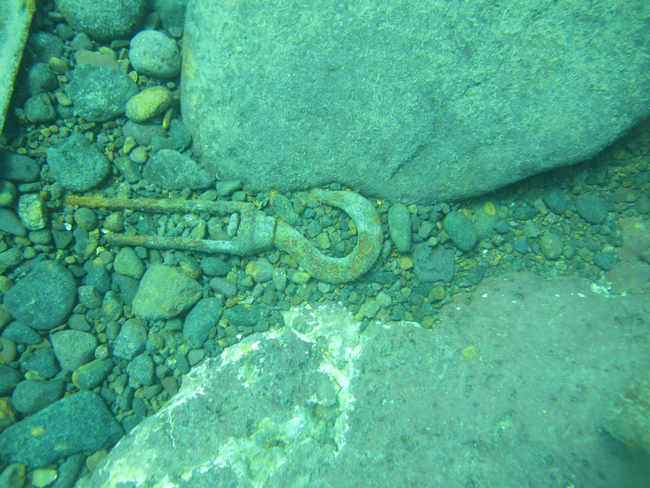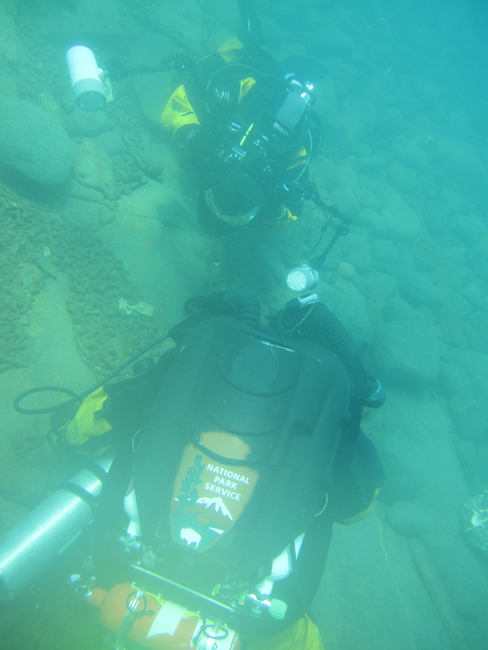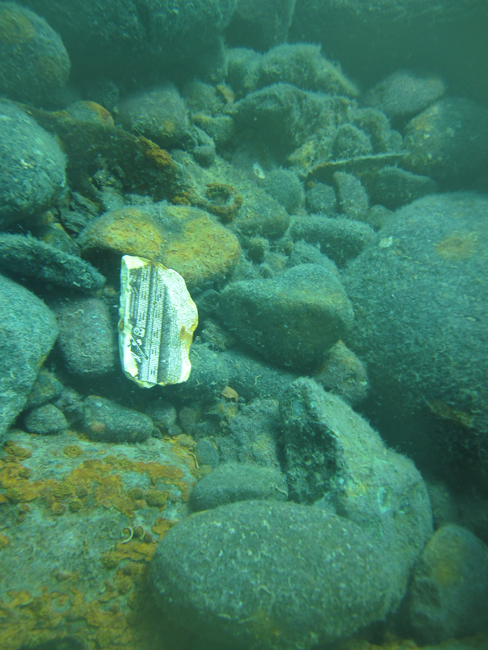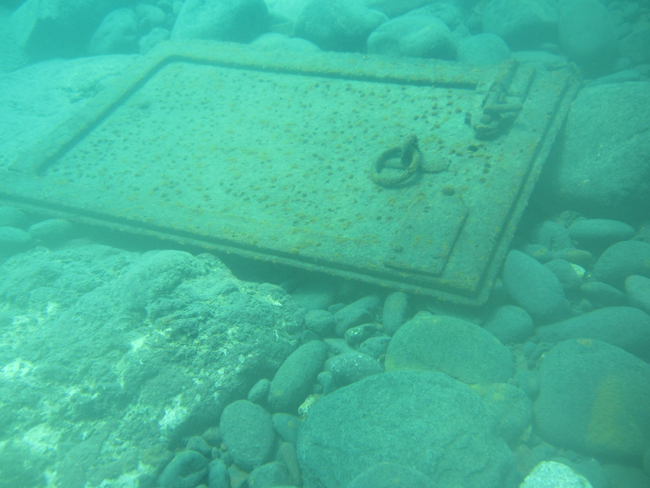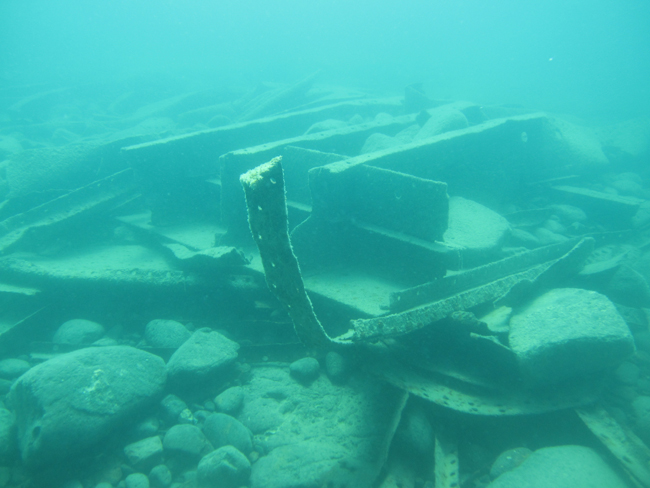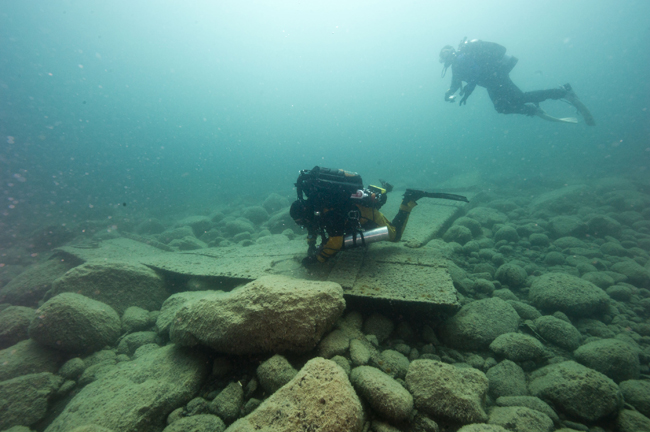To make my way to my next destination, Isle Royale, I met Susanna Pershern from the Submerged Resources Center (SRC) at the St. Croix National Scenic River headquarters in Wisconsin. We drove to her brother’s house to meet with Brett Seymour and Tara Van Niekerk who pulled the trailer full of gear from the SRC headquarters in Denver, Colorado. The SRC team was on its way to Isle Royale to work with Woods Hole Oceanographic Institute (WHOI) to film shipwrecks in the park using special cameras that enable the production of 3-D videos. One thing I learned during my experience in Michigan was the amount of equipment it takes to run a complex operation such as filming something underwater. It only gets more complicated when it is in a remote location such as an island like Isle Royale or Dry Tortugas. Added to the dive equipment and camera equipment are personal belongings and 3 weeks of food for 8 people, as well as extra supplies that must also be brought along. Once we had transferred our gear into the trailer, we hit the road for Houghton, Michigan and arrived there about 5 hours later. Dave Conlin, who had flown in from Denver, Colorado was already at the hotel when we arrived.
The following morning we drove down to the dock with the trailer and put all the gear into carts that would be loaded on to the ship with an ATV before boarding. Then, we all headed to the grocery store to pick up food for the trip. While the rest of the crew was shopping for three weeks of food, I was only shopping for one week since I would be leaving the island that weekend to move on to my next destination. As you may imagine, shopping for food for that amount of time and knowing that you will not eat anything other than what you bring is not an easy task. The SRC crew, Susanna especially, knows that it is easier to buy more than you think you will need and have extra instead not having enough and going hungry. I followed the same principle knowing any food I left behind would be used by the crew after I left. Once we bought all the groceries, we took them back to the dock to load them into more carts. Our perishables were stored in the refrigerator on the boat to ensure they did not spoil before we left.
The boat was supposed to take us out to the island the next day, but it was cancelled due to stormy conditions on the lake. We went down to McLain State Park to look at the waves, and I was amazed how much Lake Superior looked exactly like the ocean. The water was the color of the sea and had waves that broke on the sandy beach. Plus, it was so vast it stretched as far as the eye could see along the horizon. However, the one and only thing that told me I was still not at the ocean was the fact that I could not taste the saltiness in the air and it did not have that same ocean smell. Even though the water is fresh, it can be just a perilous as the salty seas and heavy fog can make navigation difficult, especially with the lake’s unexpected shallows and many islands. This is why there are so many wrecks to be found in the lake.
By the next day, the weather had calmed down enough for the Ranger III to make her journey out to Isle Royale. It is about a five hour boat ride from the Houghton, Michigan shore to Mott Island on Isle Royale. The Ranger III moves fairly quickly for being the largest ship owned and operated by the National Park Service and it is very stable as well.
When we arrived, it was time to unload our gear from the carts that had been stored on the big boat into three smaller boats. These boats would bring us and our gear to our housing at Windigo on the west side of Isle Royale. Packing the gear in the boat in an organized manner while making sure the weight was distributed equally was important to make the 3 hour trip safely. When we got there, we loaded up a trailer attached to a tractor to bring the gear up to the house where we would be staying. When everything finally was unloaded, we sorted through it to find our own groceries and belongings. I made myself dinner then went straight to bed because I was so exhausted after the long day of boat travel, loading, and unloading of gear.
During my brief first encounter while moving from the mainland to the island, I was amazed by the natural beauty of Isle Royale. The air was so crisp, clean, and pure-it simply felt good to breathe. Also, the bright green foliage was lush, and I marveled at the different types of wildflowers. The wilderness is outstanding and like no other place I have ever seen in my life. I also noticed that visitors seemed well prepared. The campers who go there are seeking that fantastic wilderness experience, and are aware of the requirements to stay somewhere so remote.
Due to its isolation, any medical emergency on Isle Royale could potentially be more dangerous because of the amount of time it would take to get to a hospital, or in the case of scuba diving injury or illness, to get to a hyperbaric chamber. So, the first thing we did the next morning was discuss the safety and emergency management plan for diving incidents for the park. Given the conditions of the lake and the remoteness of the island, caution and safe decision making are of utmost importance. We also discussed how we would be using Nitrox, which is compressed air with higher concentrations of oxygen. The air in our atmosphere contains 78% nitrogen and 21% oxygen. However, Nitrox typically consists of 32% to 36% oxygen. Nitrox is used to extend dive times at mid range depths and reduce the amount of nitrogen that accumulates in the body tissues. However, we used the same diving tables and bottom times that we would normally use for air, with the added safety of using of Nitrox. Since high concentrations of oxygen become toxic at certain depths, one critically important aspect of using Nitrox is setting a maximum operating depth, or the deepest you can safely go during a dive. Also, all tanks must be personally analyzed by the diver using that tank for him or her to know the concentration of oxygen before it is used on a dive. This is because higher concentrations of oxygen have shallower maximum operating depths, so if your mix is supposed to be 34% oxygen and it is actually 65% it would become lethal before you hit what you thought was your maximum operating depth.
We were asked to look for Zebra mussels while diving. These are invasive in Lake Superior. If we did find a mussel, we were told to make a mental note of the depth, the water temperature, and the material onto which they attached. Another reason it is so important to film the underwater cultural resources now is because in the future, it is likely that the resources will be covered with Zebra mussels. This, for example, is happening on the archaeological sites in Lake Mead National Recreation Area as a result of the invasive Quagga mussels.
For our first dive, we did a “shake down” dive at the dock, where everyone got into the shallow water to make sure all of the gear functioned properly. Tara and I spent time getting familiar with our drysuits because neither of us had much experience in drysuits outside of the initial training. Also, Dave and Brett made sure their rebreathers, or closed circuit scuba systems which recycle exhaled air to make it breathable again, were working as well. The water was about 46 degrees Fahrenheit and hurt my hands and face until they went numb. The drysuit took some getting used to, but it was comfortable. I was amazed at the crystal clarity of the water; however, there was a layer of gelatinous silt at the bottom that created clouds cutting the visibility if it was disturbed. Mainly I saw logs and sticks, a few items visitors had dropped, and moose antler. However Paul Brown, Chief of Natural Resources, found a single adult zebra mussel. They believe that since it was an adult and no juveniles were around it may have fallen off of a boat and landed there.
Our next goal was to do “condition assessments” for the shipwrecks the SRC and WHOI would be filming for the next two weeks. The purpose of a condition assessment is to go down and visually inspect an archaeological site to note any changes that may have occurred since the previous assessment. The first wreck was SS America. Even though there was no loss of life when this vessel sank in 1928, there is something incredibly eerie about seeing a ship underwater that is still intact with remnants of familiar things such as sinks and stairs. It was an unusual experience to swim down a staircase and out the side of a boat-something that I had never experienced before.
After we got back to Windigo, I got the opportunity to see a moose! Sometime in the early 1900’s moose immigrated to the island and continue to survive out there to this day. At this time of year, they are “rutting” which means that the males are actively looking for females to mate with and are seen more commonly on the island.
That night, I packed up my bags because I was leaving Windigo the next day to go to Mott Island, where I would be taking the Ranger III back the following day. However, I did get the chance to squeeze in one more dive before I left. When we docked at Mott Island and refueled the boat, we headed over to the wreck of Algoma to do another condition assessment. The Algoma wrecked in 1885 causing the largest loss of life on Lake Superior, 48 lives. However, diving Algoma was not as spooky as diving America because it does not resemble a ship whatsoever, but rather consists of torn fragments of what used to be a ship. There were lots of interesting artifacts such as pieces of china that usually are not found on most wrecks because they typically have been picked clean by divers looking for souvenirs to take home. During this dive I was extremely cold. When I first jumped in and descended, I got a brain freeze. After that, I was comfortable for about the first five minutes before I started to shiver through my regulator and my hands become so cold I did they did not even feel cold anymore, they just stung badly. Even when I got out of the water, it took about 5 minutes for the blood to circulate back into my hands and for the pain to go away. I don’t know if I have spent too much time in tropical waters and have lost my cold tolerance or I have been too spoiled, but I must say that those who decide to jump in and submerge themselves in Lake Superior for more than 10 minutes are a tough breed of truly dedicated divers.
After our dive, we went back to the dock at Mott Island to greet the Ranger III and the crew from WHOI. After their gear was loaded up on the boats, they took the ride back to Windigo while I stayed at Mott Island to catch the Ranger III out the next day to be off to my next destination, the Delaware Water Gap.
Although I did not stay at Isle Royale long, I felt incredibly fortunate to have experienced a place filled with such pristine shipwrecks and wilderness. It was a unique opportunity that enriched my understanding of the diverse diving in the National Park Service. It also gave me a newfound appreciation for all the hard work that goes on behind the scenes of a huge underwater filming project and for those who are willing to regularly dive in water that cold.
Thank you to Dave Conlin, Brett Seymour, Steve Martin, Val Martin, Susanna Pershern, Tara Van Niekerk, Dan Pontbriand, Paul Brown, Sean Curry, Marshall Plumer, Maryann Morin, Becky Kagan Schott, and John Roark.
